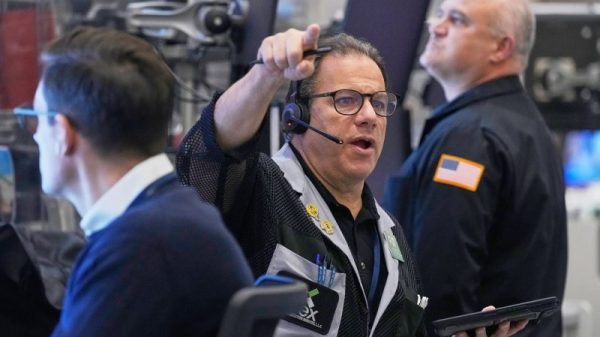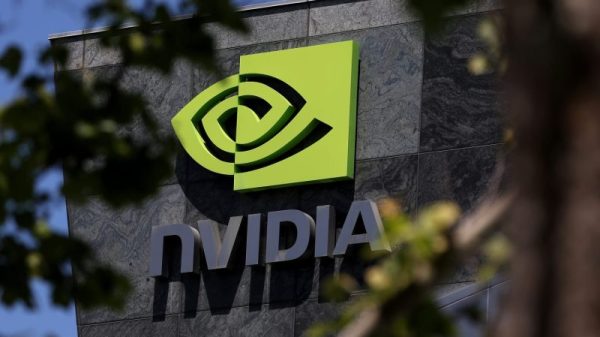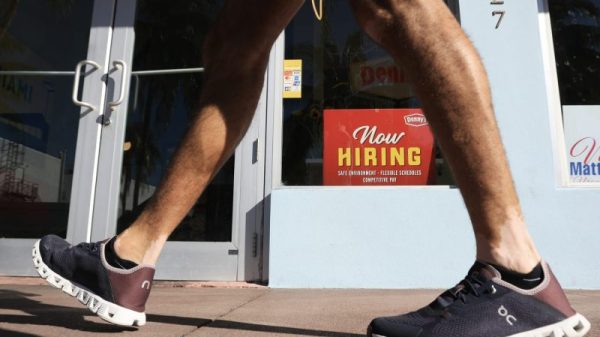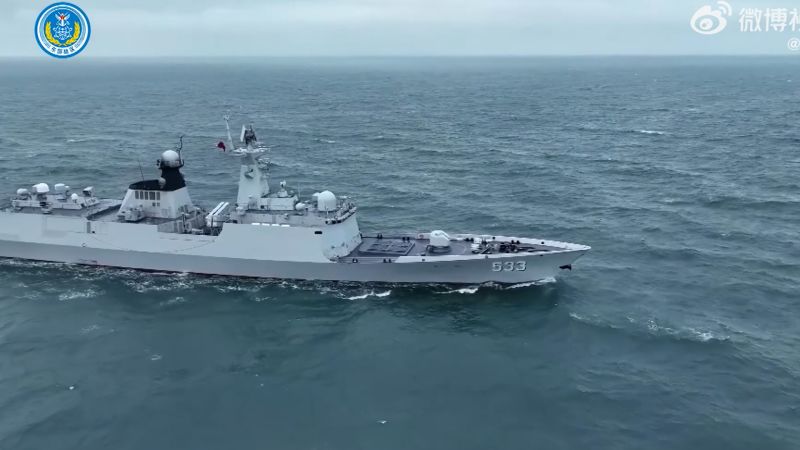China’s military drills around Taiwan are designed to test its ability to “seize power” over the island, the People’s Liberation Army said Friday as its forces kicked off a second day of large-scale exercises encircling its democratic neighbor.
The drills are the largest in more than a year and come just days after Taiwan swore in its new president, Lai Ching-te, who is openly loathed by Beijing for championing the island’s sovereignty and distinct identity.
Beijing has denounced Lai as a “dangerous separatist” and decried his inauguration speech on Monday, during which he called on China to cease its intimidation of Taiwan, which has grown much more pronounced under Chinese leader Xi Jinping.
The PLA, which dwarfs Taipei’s outgunned military, kicked off the exercises on Thursday morning, sending warships and fighter jets around Taiwan and its outlying islands in what it called “a strong punishment for separatist acts of Taiwan independence forces.”
On Friday, the PLA’s Eastern Theater Command said it was continuing the drills on both sides of the Taiwan island chain to “test the ability to jointly seize power, launch joint attacks and occupy key areas.”
China’s ruling Communist Party views Taiwan as part of its territory, despite never having controlled it, and has vowed to take the island by force if necessary.
The vast majority of Taiwanese have no desire to live under Chinese rule. But Xi, China’s most authoritarian leader in a generation, has made clear the island’s “inevitable reunification” with the mainland cannot be put off indefinitely.
The two-day exercises, involving joint operations of China’s army, navy, air force and rocket force, are being conducted in the Taiwan Strait – a narrow body of water separating the island from mainland China – as well as north, south and east of Taiwan, according to the PLA.
For the first time, the PLA drills also involved China’s Coast Guard, operating in areas around Taiwan’s outlying islands of Kinmen, Matsu, Wuqiu and Dongyin, located just off the southeastern coast of China.
CCTV aired footage on Friday that shows PLA soldiers moving mobile artillery and missile systems into position, though it did not show any live fire.
Taiwan’s Defense Ministry has condemned China’s military exercises as “irrational provocations” and dispatched its own sea, air and ground forces in response.
Between 6 a.m. Thursday and 6 a.m. Friday, the ministry detected 49 Chinese aircraft, including 35 that crossed the Median Line, an informal demarcation point in the Taiwan Strait that Beijing does not recognize but until recent years had largely respected.
A total of 19 Chinese warships and seven coast guard vessels were detected near the Taiwan Strait, according to the ministry.
Taiwan’s presidential office said Thursday it is “regrettable to see China threatening Taiwan’s democracy and freedom and regional peace and stability with unilateral military provocations,” adding Taiwan has the “confidence and ability to protect national security.”
First week in office
Lai has had a busy and politically turbulent start to his presidency after taking over from two-term leader Tsai Ing-wen, to kick off a historic third consecutive term for the ruling Democratic Progressive Party (DPP).
The PLA’s drills pose the first real test for the veteran politician in managing tensions with Beijing, which has refused his offer to talk and to resume cross-strait tourism and student exchanges.
On Friday, China’s Defense Ministry accused Lai of pushing Taiwan into “a dangerous situation of war”and “playing with fire.”
“Those who play with fire will burn themselves,” ministry spokesperson Wu Qian told reporters, using rhetoric China frequently deploys for Taiwan’s government. “Whenever ‘Taiwan independence’ (forces) provoke us, we will push our countermeasures forward until the complete reunification of the motherland is achieved.”
Domestically, Lai is facing chaos in the legislature, where opposition parties who favor closer ties to China hold a majority, and have pushed to subject his administration to tighter scrutiny.
Thousands of mostly young people have taken to the streets to protest the opposition’s attempt to fast-track the proposed bills to grant the parliament more power.
But despite Beijing’s large show of force, life continued as normal in Taiwan, whose 23 million people have become used to China’s military threats, even as they become more regular and prominent in recent years.
“If the Chinese Communist Party does attack Taiwan, it won’t be easy for them to take Taiwan. Taiwanese people are not afraid of war.”
A 42-year-old mother, who gave her surname Tsai, said she wasn’t even aware the PLA drills were taking place.
“I believe leaders will prioritize people’s happiness, so I’m not worried. I think peace will be maintained,” she said.
‘Blockading Taiwan’
China’s military drills are often as much about playing to a domestic audience as signaling intentions internationally, and state media has ramped up coverage of the drills.
Zhang Chi, a Chinese military expert, told China’s state broadcaster CCTV that the PLA’s exercises focused on “practicing a new mode of blockading Taiwan.”
“Taiwan is an isolated island, suspended in the sea with weak self-sufficiency. Taiwan’s economy is export-oriented, and most of its energy consumption relies on imports. Once besieged and blockaded, it can easily lead to economic collapse, turning it into a dead island,” he said.
The exercises to the south of Taiwan are crucial for the blockade, targeting Kaohsiung port, Taiwan’s largest port and an important base for the island’s navy, Zhang said. Meanwhile, drills to the east of Taiwan are designed to practice cutting off the island’s energy imports, the escape routes for “Taiwan independence” forces and the support line from the US and its allies, he added.
The US maintains close but informal relations with Taiwan and is bound by law to supply the island with weapons to defend itself.
Zhang also noted that the drills had achieved “a new breakthrough” by entering waters near Wuqiu and Dongyin, which hold significant geographical importance.
“The Taiwanese military views them as the front outposts for Taiwan Strait defense operations. This exercise further squeezed the activity space of the Taiwanese military,” he said.
Analysts said the China Coast Guard movement close to and around the outlying islands was an important new aspect of the current drills, which follow previous encirclement exercises in August 2022 and April 2023.
“The pressing of Coast Guard and other forces into waters close to those offshore islands is provocative,” said Carl Schuster, a former director of operations at the US Pacific Command’s Joint Intelligence Center.
He said he expected such Chinese activities to continue and that they “will become the norm,” with Beijing at any point able to then turn an exercise into a real military operation.
Craig Singleton, senior China fellow at the nonpartisan Foundation for Defense of Democracies, said China’s pattern of exercises around Taiwan does not signal an imminent invasion threat.
“These drills aid in blurring the lines between peace and war, so much so that future exercises could be used as a pretext for an actual invasion,” Singleton said.
But Singleton and others say the exercises are sending a bigger political message than a military one.
“Joint Sword – 2024A aims at reactivating the military pressure lever to assert a degree of influence on the new (Taiwan) administration and its narrative,” said Lionel Fatton, assistant professor of international relations at Webster University in Geneva, using China’s name for this week’s drills.
Beijing will use the pressure of the drills to try to increase divisions within Taiwan, which could “weaken” the island from the inside, he said.
“Constant and visible military pressure on the island will also help polarize the political apparatus, if not the social fabric itself,” Fatton said.



























